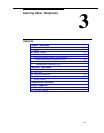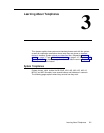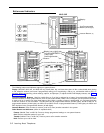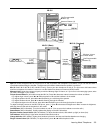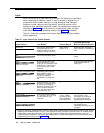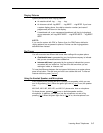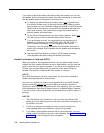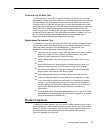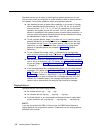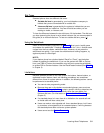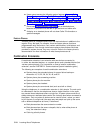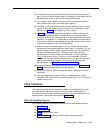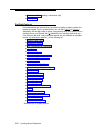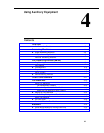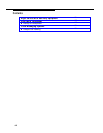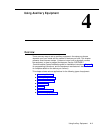
Standard phones can do many of the things that system phones can do, and
you can save money by using them in certain situations when a system phone is
not needed. Follow these guidelines when using standard phones:
■
■
■
■
■
■
■
■
Use standard phones as power failure backups. In the event of a power
failure, standard phones at extensions 10, 16, 22, 28, 34, 40, 46, and 52
connect to lines 1, 3, 5, 7, 9, 11, 13, and 15, respectively, for continued
operation; but system phones will not work. You can connect standard
phones in combination with system phones at power failure extensions, or
you can simply keep spare standard phones at those extensions to serve
as replacements in case of a power failure.
To use a system feature, press [
# ] (in place of [ Feature ] used on system
phones) followed by its two-digit code when you hear intercom dial tone.
For features that use [
Intercom ] on system phones, dial only the two-digit
code when you hear intercom dial tone. (Instructions for using these
features on standard phones are included in Chapter 5, “Feature
Reference.”)
To use a Speed Dial number, press [
# ] followed by its two-digit code
when you hear intercom dial tone. (For details, see “System Speed Dial
Numbers” and “Personal Speed Dial Numbers” in Chapter 5.)
Use the switchhook on a standard phone to place calls on hold, transfer a
call, or set up a conference call. (For details, see “Using the Switchhook”
on the next page, or “Hold,” “Transferring Calls,” and “Conference Calls”
in Chapter 5.)
If the standard phone has a message waiting light, use it to notify users of
messages. (For details, see “Message Light On” and “Message Light
Off” in Chapter 5. For a list of supported phones, see “Standard
Telephones” in Chapter 1.) Alternatively, if you have a voice messaging
system, the light is used to indicate that a message has been left in the
mailbox. On a standard phone, the message light flashes when the
phone is idle to indicate that the extension has received a message.
Ringing Patterns
Standard phones have these ringing patterns:
An outside call will ring . . . ring . . . ring.
An intercom call will ring-ring . . . ring-ring . . . ring-ring.
A transferred call, or an unanswered transferred call that is ringing back
at your extension, will ring-ring-ring . . . ring-ring-ring . . . ring-ring-ring.
NOTE:
If you use the system with PBX or Centrex lines, the PBX/Centrex distinctive
ringing patterns are not passed to phones. Telephones use the ringing patterns
described here instead.
3-8 Learning About Telephones



